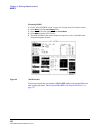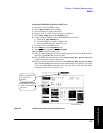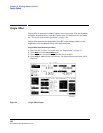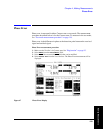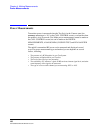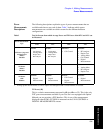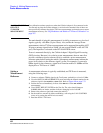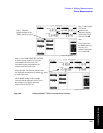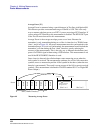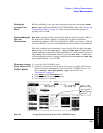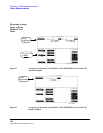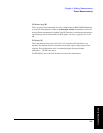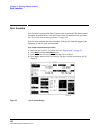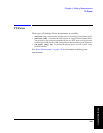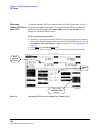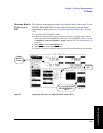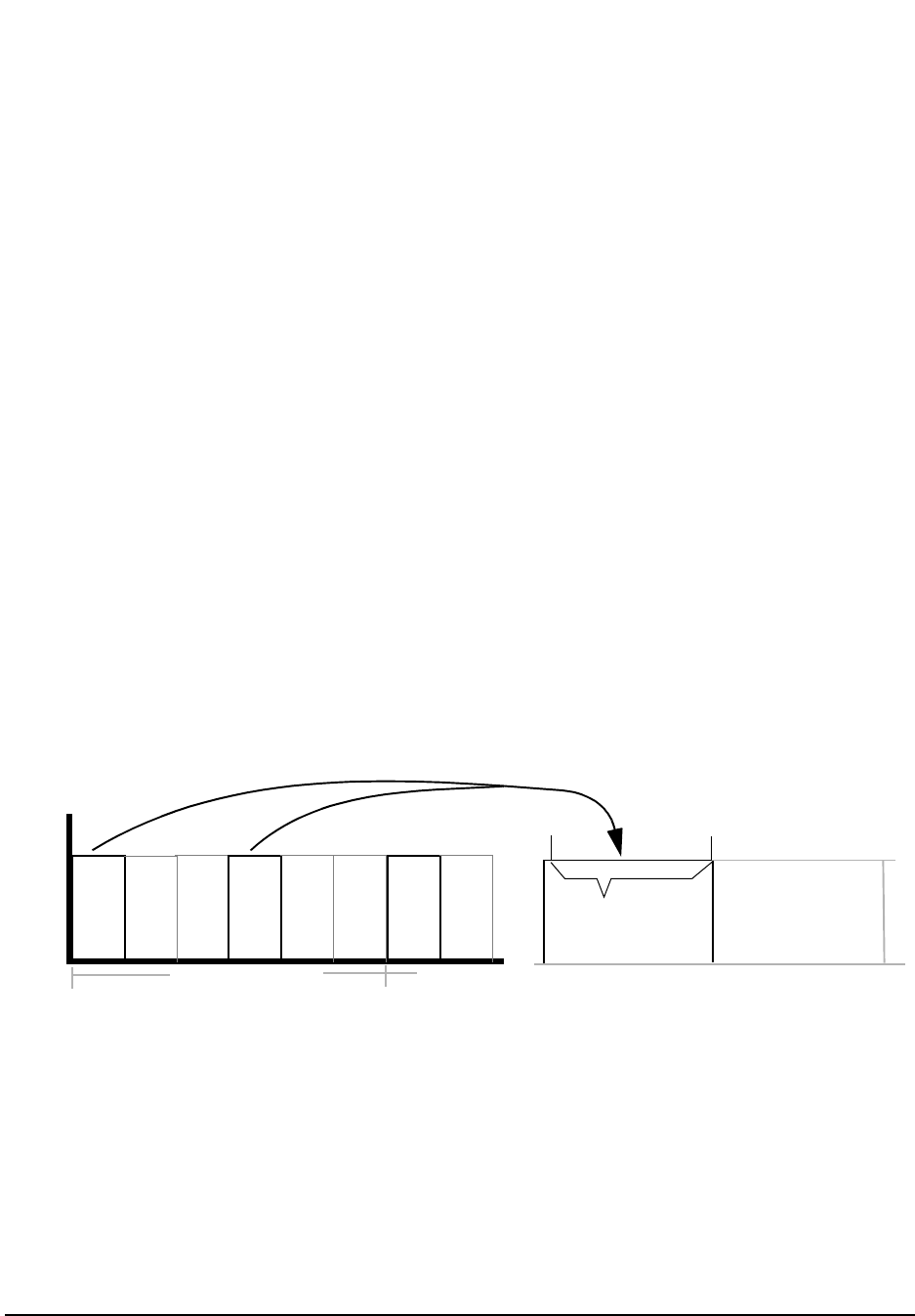
134
S:\HP83206A\USRGUIDE\MANUAL\meas.fm
Chapter 4, Making Measurements
Power Measurements
Average Power [W]
Average Power is measured using a special detector in Test Sets with Option 006.
This detector provides a measurement range of 50mW to 10W. This is the only
way to measure absolute power on a DTC if you are not using a PCS Interface. If
you are using a PCS Interface, this measurement is disabled. The RF IN/OUT port
of the Test Set must be used for this measurement.
Average Power is the average envelope power over a burst. Because the
transmitter is only transmitting during two of the six timeslots in a TDMA frame
(slots 1 and 4 in Figure 49), the power measurement must be synchronized to the
transmitted bursts. If it was not synchronized, the measurement would include the
transmitter’s off time during the four “dead” timeslots, greatly reducing the
accuracy of the measurement. This is the only way to measure the absolute (rms)
power of a TDMA signal without using a PCS Interface. This measurement is not
used if the HP 83236B PCS Interface is used.
Once a burst is detected, the cellular adapter starts measuring power when the
sixth symbol is received. The measurement continues for at least 140 consecutive
symbols; never to measure beyond the 162nd symbol in that burst (when the next
timeslot is encountered). The result is a true average of the 140 (or more) received
symbols. (This measurement is defined in TIA/EIA standard IS-137 as Digital RF
Power Output.)
Figure 49 Measuring Average Power
Power
Time (TDMA Timeslots)
Slot 1
Slot 2
Slot 3
Slot 4
Slot 5
Slot 6
Symbol 6
Symbol 162
Power is measured
during this time.
Slot 1 or 4 Slot 2 or 5
Slot 1
Slot 2
1 Complete Frame
Next Frame



